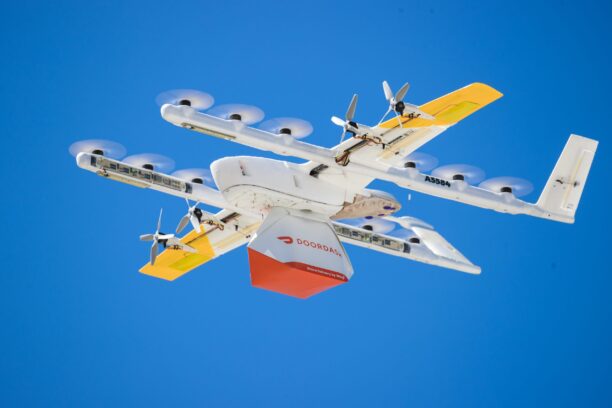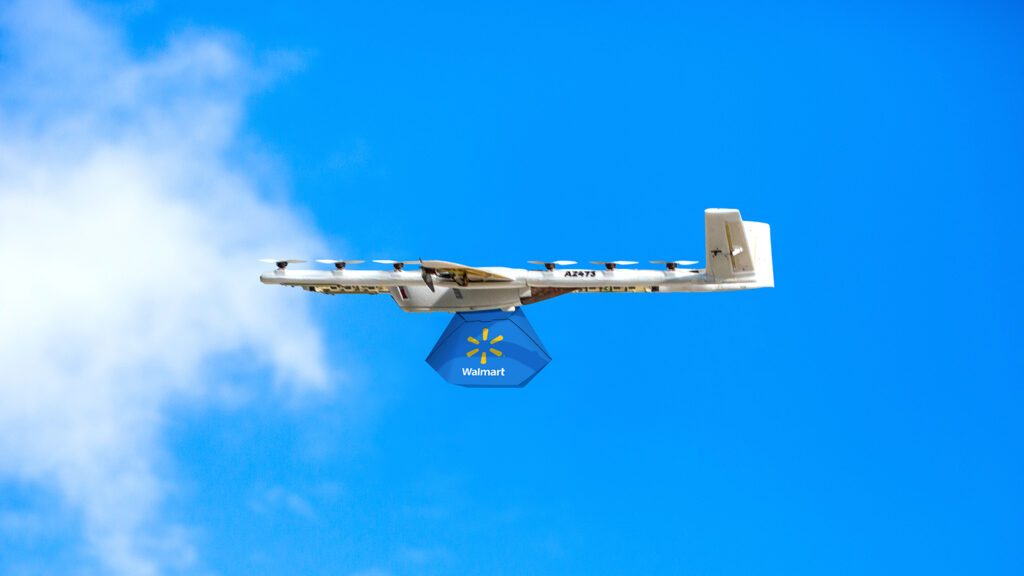Zipline and Wing Aviation to Pioneer Package Deliveries Using Advanced UTM Technology in Dallas/Fort Worth
By DRONELIFE Features Editor Jim Magill
The FAA on Tuesday announced its first-ever approval for beyond visual line of sight drone flights by more than one operator flying in the same airspace.

Under the new authorizations Zipline International and Wing Aviation will be allowed deliver packages while keeping their drones safely separated using Unmanned Aircraft System Traffic Management (UTM) technology pioneered for the Dallas/Fort Worth airspace.
“This is a key moment for the entire aviation industry as the world prepares for a future with more flights and an even greater need for coordination,” Zipline said in a statement. “Over the past few years, we’ve built our own product for implementing UTM, which maintains safe, fair, and transparent operations between Zipline and other drone operators.”
A Wing spokesperson said the FAA announcement is a reflection of the efforts of many drone industry players and government agencies to work together to implement the strategic coordinated use of shared airspace.
“FAA, NASA, and industry participants have worked to operationalize UAS Traffic Management (UTM) services to support complex, beyond visual line of sight (BVLOS), commercial drone operations, with contributions from the Global UTM Association (GUTMA) and Linux Foundation’s InterUSS Platform,” the spokesperson said.
The FAA said it expects that initial flights using UTM services will begin in August and the agency promised to begin issuing more authorizations in the Dallas/Fort Worth area soon.
The announcement comes as the FAA works to release the Normalizing UAS BVLOS Notice of Proposed Rulemaking (NPRM) later this year. That puts the agency on track to meet the 20-month timeline to pass the final BVLOS rule, which Congress gave the FAA in May with the passage of the FAA Reauthorization Act.
“Drones represent a very different type of aircraft than traditional commercial aviation, and the FAA’s approach to this new NPRM has evolved accordingly,” the FAA said in a statement. “Industry has created the market and technology, and the Agency has worked with them on creative solutions to ensure operations can be done safely – UTM services are a clear example of this innovative approach.”
FAA BVLOS Approval: A Collaborative Effort
Tuesday’s authorization announcement comes as a result of the establishment of the North Texas Shared Airspace Implementation, a collaborative effort by drone industry companies and governmental agencies to establish an FAA-approved UTM Key Site in the DFW area. The Key Site was initially established by seven operators to create a communications and conflict detection-and-avoidance system for UAVs, similar to but separate from the federal air traffic management (ATM) system for crewed aircraft.
In an FAA blog post providing background on the authorization announcement, Praveen Raju, a program manager in the FAA’s NextGen Office, said the authorization represents the first time that the FAA has recognized a third party to safely manage drone-to-drone interactions. “As always, safety comes first, and we required exhaustive research and testing before giving the green light,” he said.
As part of the DFW Key Site project, participants in the thriving drone delivery market in the area began testing the UTM system last year with simulations, representing potential conflict-avoidance situations likely to be encountered in the region’s airspace at altitudes below 400 feet. The first live flight under the system, involving Wing and Manna in which the drones operated in separated airspaces, took place on June 21.
“The industry is providing us with a lot of detailed documentation and we’re providing a lot of oversight,” said Jarrett Larrow, regulatory and policy lead at the FAA’s UAS Integration Office. “These public-private partnerships are key to safely integrating drones into our National Airspace System.”
Zipline, one of the original members of the DFW UTM Key Site project, said, “UTM starts with a simple idea: drone operators work together to share where they intend to fly so that drones won’t fly too close to each other. Without UTM, that can take a long time as teams frequently manually handle route validation, safety checks and all of the documentation that is required for every flight. With UTM, those same steps can be done in seconds.”
In a recent interview, Brent Klavon, head of global operations of ANRA Technologies, one of the companies behind the development of the UTM Key Site, said he expects the FAA to use the successful management of drone operations in the DFW area as a model for implementing future UTM regulations nationwide.
“One of the interesting things that we expect is a governance framework and a technical framework that then be able to form rulemaking in the United States, while we’re doing real commercial operational flights in Dallas/Fort Worth,” he said.
“Under today’s FAA rules, there wasn’t anything in place that they could point to and say, ‘Okay industry, here’s the rule to follow. And so, we decided as an industry, with the FAA at the table, to be able to take this to somewhere where we could — with some criteria, some framework — to be able to now go operational.”
Read more:
- Walmart, Partners to Expand Drone Delivery in Dallas Fort Worth
- Wing Expands Drone Delivery Service in Dallas-Fort Worth
- Sky’s the Limit: Walmart’s Ambitious Drone Expansion with Wing and Zipline Set to Transform Dallas/Fort Worth Metroplex Delivery Landscape
Miriam McNabb is the Editor-in-Chief of DRONELIFE and CEO of JobForDrones, a professional drone services marketplace, and a fascinated observer of the emerging drone industry and the regulatory environment for drones. Miriam has penned over 3,000 articles focused on the commercial drone space and is an international speaker and recognized figure in the industry. Miriam has a degree from the University of Chicago and over 20 years of experience in high tech sales and marketing for new technologies.
For drone industry consulting or writing, Email Miriam.
TWITTER:@spaldingbarker
Subscribe to DroneLife here.
